From Lost Cities to Glowing Creatures, These Watery Enigmas Prove We Know Less About The Deep Than We Think.
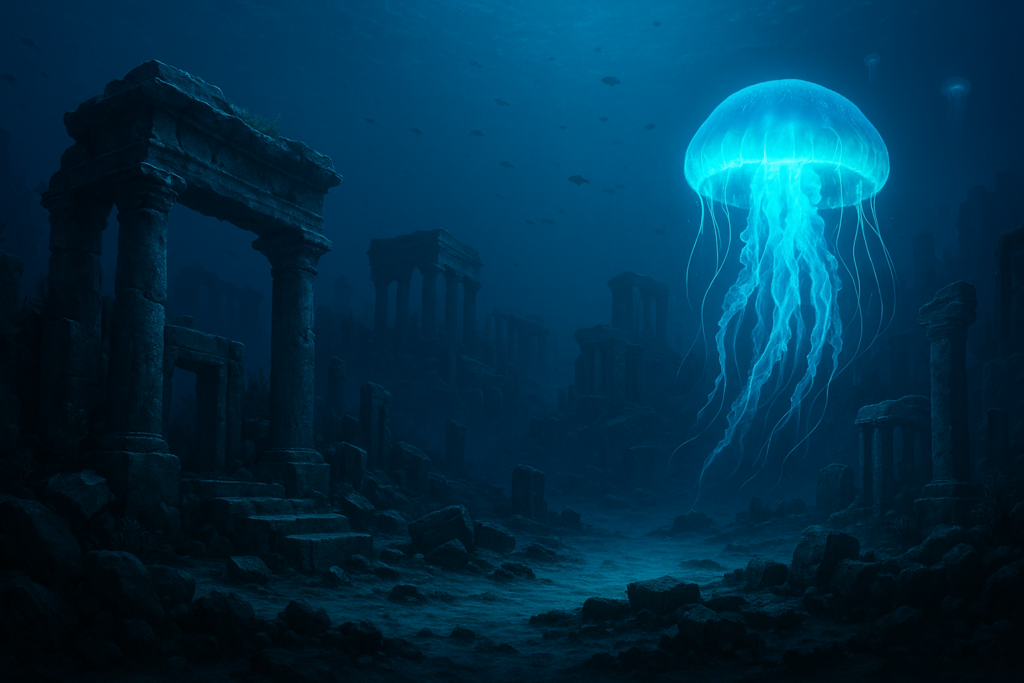
We’ve sent rovers to Mars and mapped the Moon in high-def, but plunge just a few miles beneath the ocean’s surface, and you’re in a world we still barely understand. The deep sea isn’t just dark and vast, it’s full of secrets: glowing creatures, ancient ruins, soundscapes no one can explain, and life forms that rewrite the rules of biology. Some mysteries seem alien. Others feel like forgotten history. All of them remind us that Earth still has corners we’ve barely begun to explore.
From lost cities and lava-belching volcanoes to jellyfish that never die, here are 26 mind-bending ocean mysteries that continue to baffle even the sharpest scientists.
1. The Yonaguni Monument
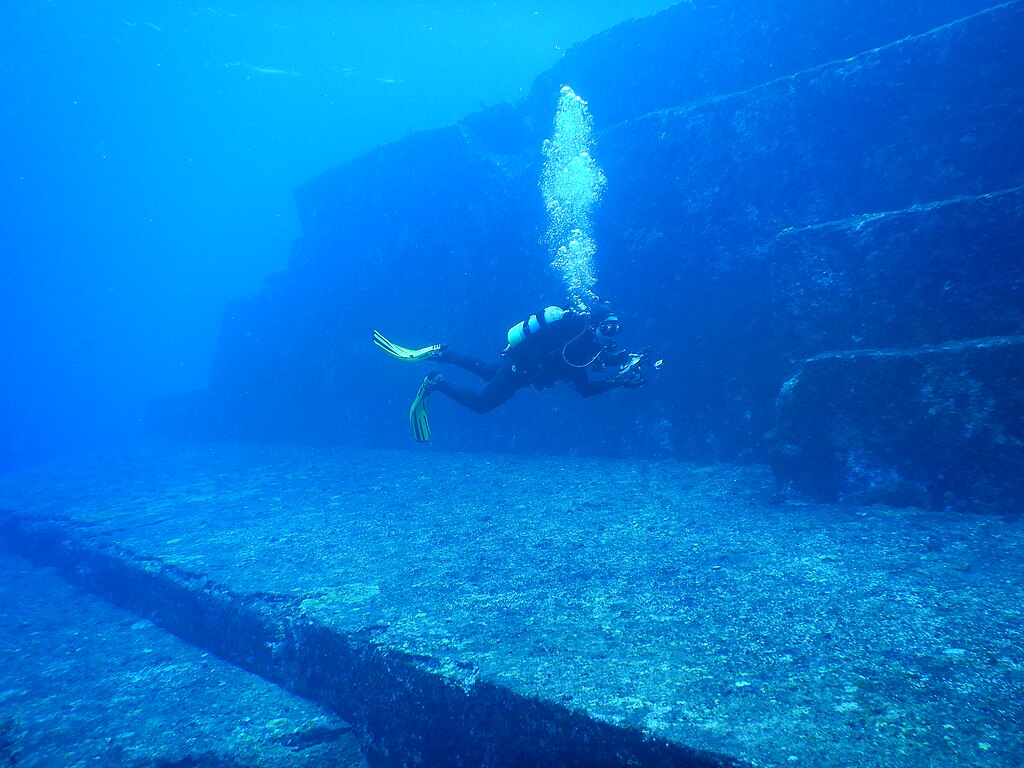
Off the coast of Japan’s Yonaguni Island lies a submerged structure so massive and precise that many believe it can’t be natural. Discovered in 1986 by a diver searching for hammerhead sharks, the Yonaguni Monument features sharply cut terraces, straight walls, flat platforms, and what appear to be steps and roads, all completely underwater at depths reaching 82 feet. The formation stretches over 490 feet long and 90 feet wide, resembling a sunken pyramid or ancient temple. Its right angles and symmetry have led some archaeologists and locals to believe it could be the remnants of a lost civilization, possibly predating even ancient Mesopotamia.
Mainstream geologists argue the structure is the result of natural tectonic activity and sandstone erosion, though few can explain its uncanny architectural features. Marine archaeologist Masaaki Kimura insists the site contains carvings, paved paths, and even what looks like a giant animal relief. No consensus exists, and debate over its origins rages on.
2. The Great Blue Hole of Belize
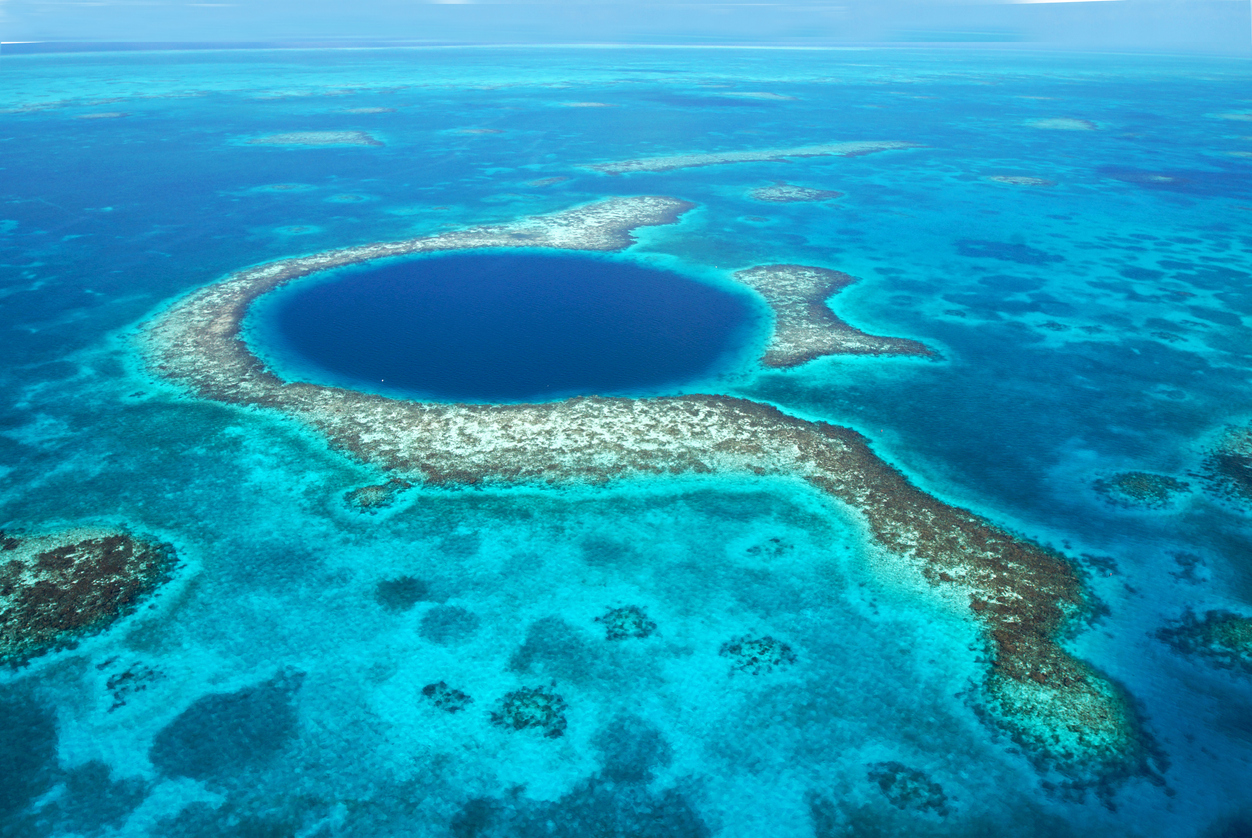
One of the most striking ocean mysteries isn’t hidden by darkness or sound, it’s right in plain sight. The Great Blue Hole, located off the coast of Belize, is a nearly perfect underwater sinkhole stretching over 1,000 feet across and plunging 410 feet deep. From the air, it looks like a massive sapphire eye staring up from the sea. Originally formed as a limestone cave system during the last Ice Age, it collapsed when sea levels rose, creating a vertical void filled with crystal-clear water, ancient stalactites, and eerie silence. But what lies at the bottom remained a mystery until 2018.
That year, an expedition led by explorer Fabien Cousteau and billionaire Richard Branson descended into the depths and found something unsettling: a thick layer of hydrogen sulfide at around 300 feet, blocking all oxygen and life beneath it. Below that, the water is completely anoxic and pitch black. There were no monsters or ruins, but the bottom revealed strange, shifting sediment formations and signs of past seismic activity. Yet scientists still don’t fully understand the Blue Hole’s geological history or what else might be hiding in its silent, unbreathable depths. Source: Travel and Leisure
3. The Bloop

In 1997, a mysterious ultra-low frequency sound reverberated through the South Pacific and scientists were baffled. Nicknamed “The Bloop,” it was picked up by underwater microphones located over 3,000 miles apart, suggesting the source was immense. The sound’s frequency and amplitude hinted at a biological origin, yet no known sea creature could produce such volume. The epicenter of the sound was traced to a remote region near Point Nemo, the oceanic pole of inaccessibility, adding to its mystique. Was it a colossal undiscovered animal? A military experiment? Or something stranger?
Years later, NOAA researchers proposed the sound likely came from an icequake, massive icebergs cracking in Antarctica. While this explanation is scientifically plausible, it didn’t stop theorists and cryptid hunters from running wild with speculation. To this day, the Bloop remains one of the most iconic unexplained ocean phenomena, and even the experts admit the case isn’t fully closed. Source: BBC Earth
4. The Milky Sea Phenomenon
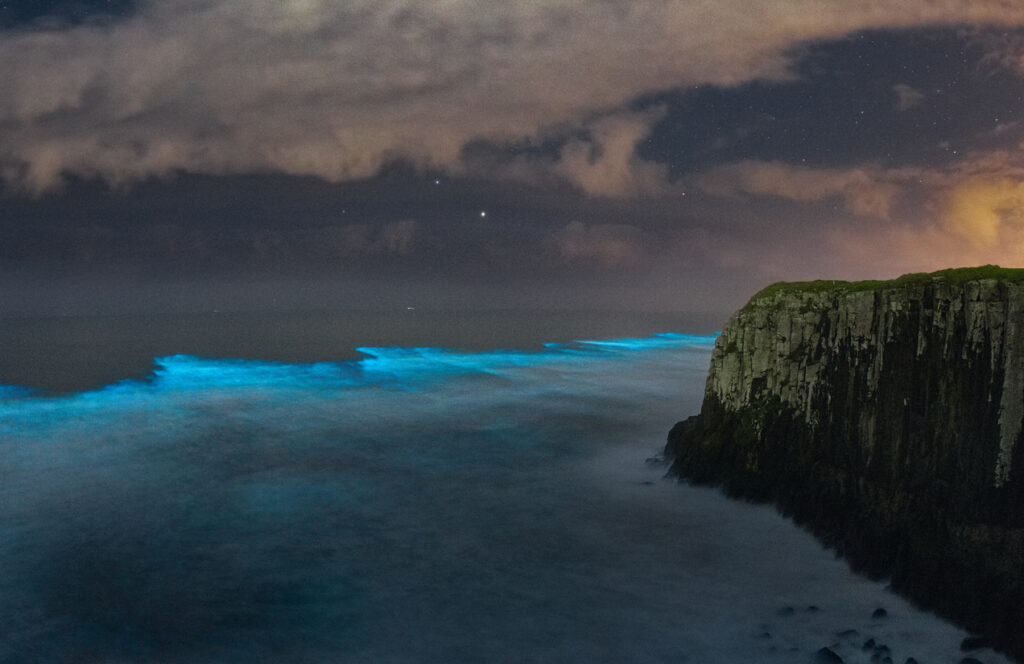
For centuries, sailors have reported sailing through glowing stretches of ocean that shine white-blue like moonlit snowfields, a surreal sight known as the Milky Sea phenomenon. This bioluminescent display can stretch over 6,000 square miles, roughly the size of Connecticut, and last for multiple nights. Unlike the flickering spark of shoreline plankton, Milky Seas emit a constant, ghostly glow that doesn’t react to ship movement. In 1995, the British merchant vessel SS Lima reported one such sea south of Yemen, describing a glow so vast it extended beyond the visible horizon in all directions.
Scientists finally confirmed the phenomenon in 2005, when satellite sensors captured a massive glowing patch near the Horn of Africa. The steady light is believed to be caused by colonies of bioluminescent bacteria living on microalgae, but the precise cause and scale remain mysterious. Even with modern tech, researchers still can’t explain how the bacteria synchronize their glow across thousands of miles. Source: BBC Earth
5. The Baltic Sea Anomaly
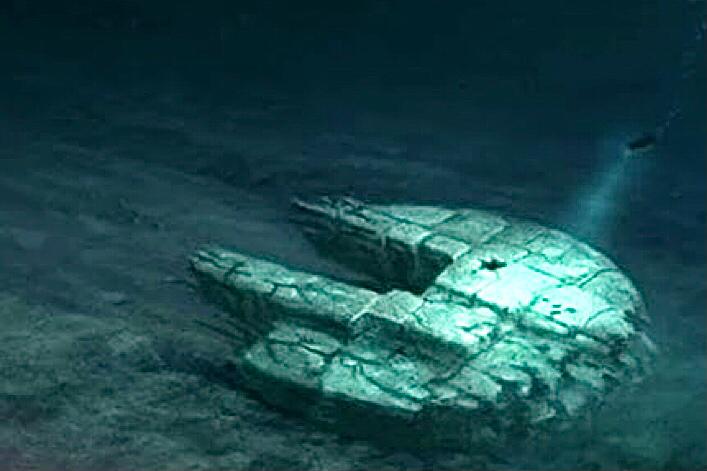
In 2011, a Swedish dive team using sonar to search for shipwrecks stumbled upon something baffling at the bottom of the Baltic Sea, a massive, disk-shaped formation resting 300 feet beneath the surface. Measuring about 200 feet across and 26 feet tall, the structure has unnaturally smooth edges, sharp angles, and what appears to be a staircase or ramp. Some sonar images even show symmetrical corridors and grooves, sparking theories that the object is a crashed UFO, an ancient sunken structure, or even a forgotten Nazi weapon.
Skeptics argue it’s simply a glacial rock formation shaped by Ice Age activity, but even experts admit it looks oddly manufactured. Divers reported electronic malfunctions near the site, and video footage shows a mysterious soot-like coating covering parts of the anomaly. Despite global interest, no major excavation has been mounted. Without physical samples or detailed scans, the true origin of this underwater mystery remains unknown. Source: CNN
6. The Bermuda Triangle

The Bermuda Triangle, also known as the Devil’s Triangle, is a loosely defined region in the western part of the North Atlantic Ocean, bounded by points in Miami, Bermuda, and Puerto Rico. Since the mid-20th century, it has been the focus of an urban legend suggesting that numerous aircraft and ships have disappeared under mysterious circumstances. Notable incidents include the disappearance of Flight 19, a group of five U.S. Navy bombers on a training mission in 1945, and the USS Cyclops, a Navy cargo ship that vanished in 1918 with over 300 people aboard. Despite extensive searches, no definitive wreckage from these incidents has been found.
Various theories have been proposed to explain these disappearances. Some suggest environmental factors such as rapid changes in weather, the presence of methane hydrates that could reduce water density and sink ships, or the strong currents of the Gulf Stream that could quickly disperse debris. Others point to human error, equipment failure, or navigational challenges due to magnetic anomalies, although studies have not found evidence of unusual magnetic disturbances in the area. While the legend of the Bermuda Triangle continues to capture the public imagination, scientific investigations generally attribute the incidents to explainable causes rather than supernatural phenomena. Source: Discover Magazine
7. The Immortal Jellyfish
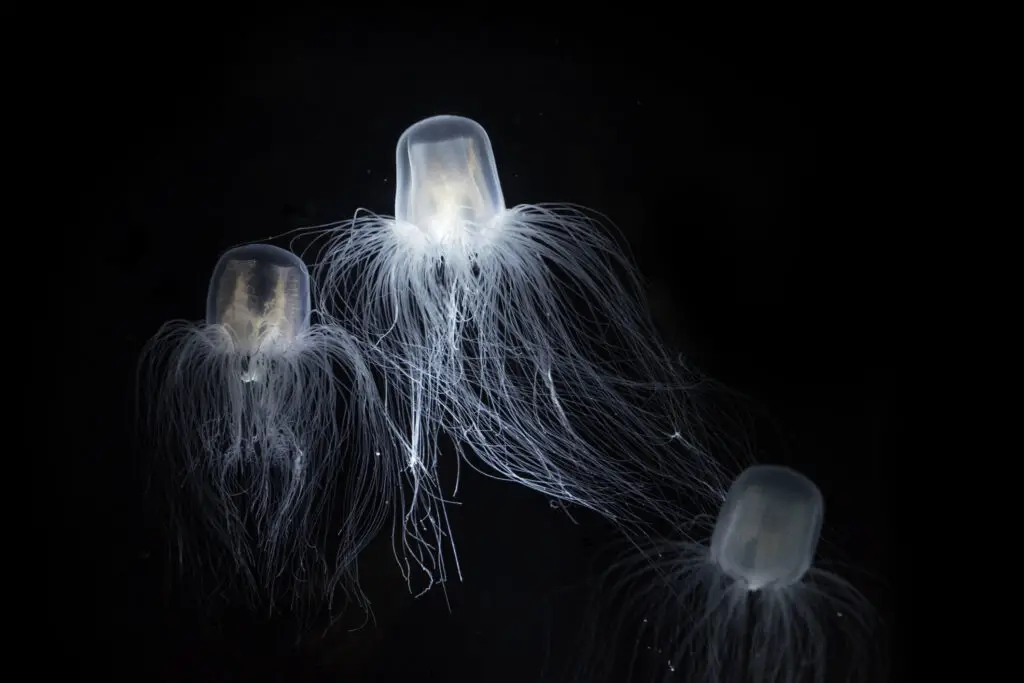
Deep in the oceans of the world, a tiny jellyfish called Turritopsis dohrnii may hold the key to immortality, and scientists still don’t fully understand how it works. Native to the Mediterranean and waters near Japan, this translucent jelly measures less than 0.2 inches in diameter, yet it can do something astonishing: when injured, starved, or aging, it reverts its cells to an earlier developmental stage, essentially transforming back into a polyp. This reversal of its life cycle can, in theory, go on indefinitely, making it biologically immortal.
Though it doesn’t escape predators or disease, Turritopsis dohrnii is the only known animal capable of repeatedly avoiding death by natural aging. Scientists are still trying to decode how its cellular mechanisms manage this regeneration without accumulating damage, a challenge that human cells struggle with. If researchers can crack the jellyfish’s genetic secrets, it could someday revolutionize aging research and regenerative medicine. Source: NOAA
8. Brine Pools of the Deep Sea
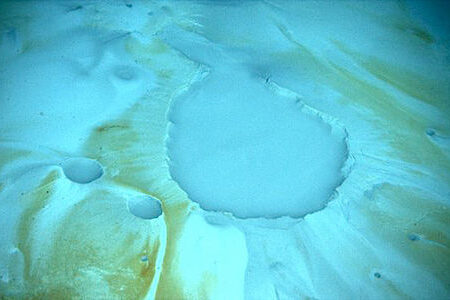
At the bottom of the Gulf of Mexico and in other deep-sea locations lie strange, shimmering lakes that exist beneath the ocean itself. These underwater brine pools are dense, salty pockets of water that don’t mix with the surrounding seawater. They appear as eerily still lakes on the ocean floor, complete with visible shorelines and waves lapping against the edge. Some even have their own currents and chemical compositions, making them deadly to most marine life. The salinity is so extreme five to eight times saltier than seawater, that most creatures entering these pools die instantly.
What fascinates scientists is how life manages to thrive around the edges. Tubeworms, mussels, and methane-eating bacteria cluster at the brine’s borders, surviving on chemical energy in a process called chemosynthesis. But how these ecosystems function in such extreme conditions is still not fully understood. Brine pools act like alien worlds on Earth’s seafloor and may mirror what life could look like on other planets.
9. The Julia Sound
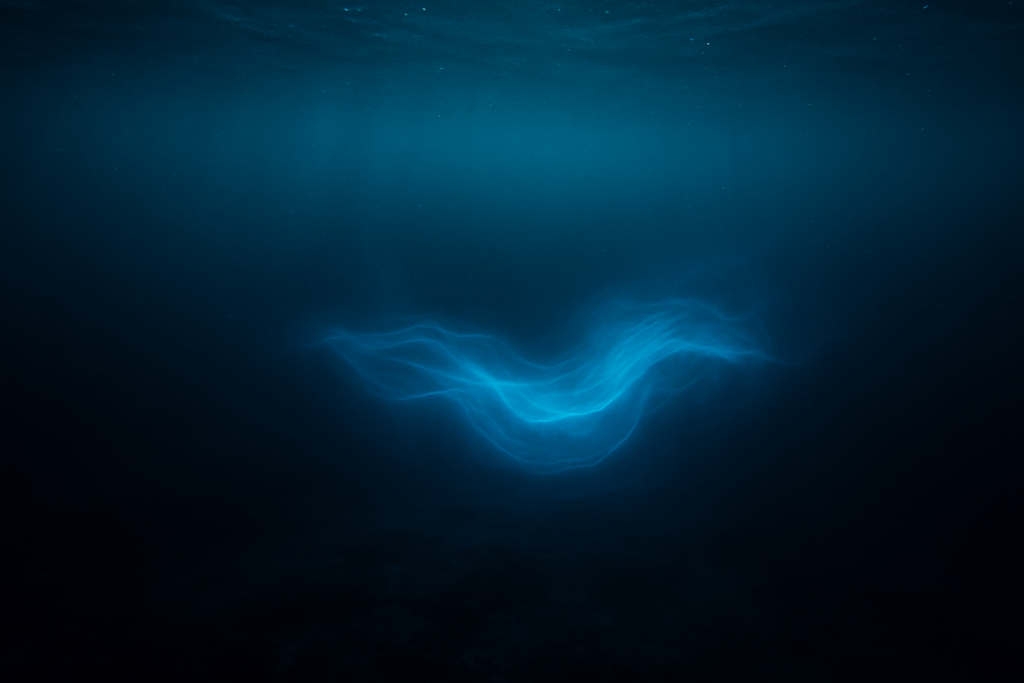
In 1999, a deep, haunting sound nicknamed “Julia” was recorded by NOAA’s underwater microphones in the equatorial Pacific Ocean. The sound lasted for roughly 15 seconds and was loud enough to be picked up by an array of sensors over 3,000 miles apart. Its slow, moaning quality gave it a ghostly reputation, and unlike the infamous Bloop, Julia had no immediately obvious explanation. The source was triangulated to a remote region near the Antarctic, further deepening the mystery and fueling wild speculation, including theories about massive sea creatures or even underwater alien technology.
While NOAA later suggested that Julia may have been the result of a large iceberg scraping the seafloor, this explanation hasn’t satisfied everyone. The eerie tone, duration, and range of the sound continue to puzzle scientists, especially given that no known biological or geological process has been able to recreate it with precision. With limited data and no repeat occurrences, Julia remains an unsolved acoustic enigma. Source: NOAA Vents Program
10. The Underwater Crop Circles of Japan

In the early 1990s, divers exploring the seafloor off Amami-Oshima Island in southern Japan discovered massive, intricately carved circles in the sand, each spanning up to 7 feet in diameter with hypnotically symmetrical designs. These underwater crop circles featured repeating ridges, perfect radial patterns, and central mounds, creating a structure so mathematically precise it seemed impossible to have formed naturally. With no immediate explanation, theories ranged from ancient alien relics to underwater seismic activity or even artificial hoaxes. For nearly two decades, the origin of these marine mandalas remained one of Japan’s strangest ocean enigmas.
It wasn’t until 2011 that high-definition footage revealed the unexpected artist: a tiny, five-inch male pufferfish. Using only his fins, he labors for days to carve these formations as part of a complex courtship ritual. The grooves reduce water turbulence, helping protect the female’s eggs. However, the evolutionary reason still stumps scientists: why develop such extreme aesthetic skills? The artistry of the pufferfish remains one of nature’s most mesmerizing and mystifying love letters. Source: Discover Magazine
11. The Disappearance of MH370

On March 8, 2014, Malaysia Airlines Flight MH370 vanished from radar during a routine trip from Kuala Lumpur to Beijing, with 239 people on board. The Boeing 777 made its last voice contact less than an hour into the flight before sharply veering off course and disappearing without a trace over the southern Indian Ocean. Despite years of multinational search efforts covering more than 46,000 square miles of seafloor, the main wreckage has never been found. Only a few fragments have washed up on distant shores, and the plane’s final moments remain one of aviation’s greatest mysteries.
What makes the disappearance even more baffling is the lack of any apparent mechanical failure or distress signals. Satellite data suggests the plane flew for hours after contact was lost, leading to speculation of hijacking, sabotage, or even a carefully planned act by someone on board. The black boxes were never recovered, leaving scientists and aviation experts without the most crucial clues. Source: Britannica
12. The Lost City of Atlantis—Maybe in Cuba?
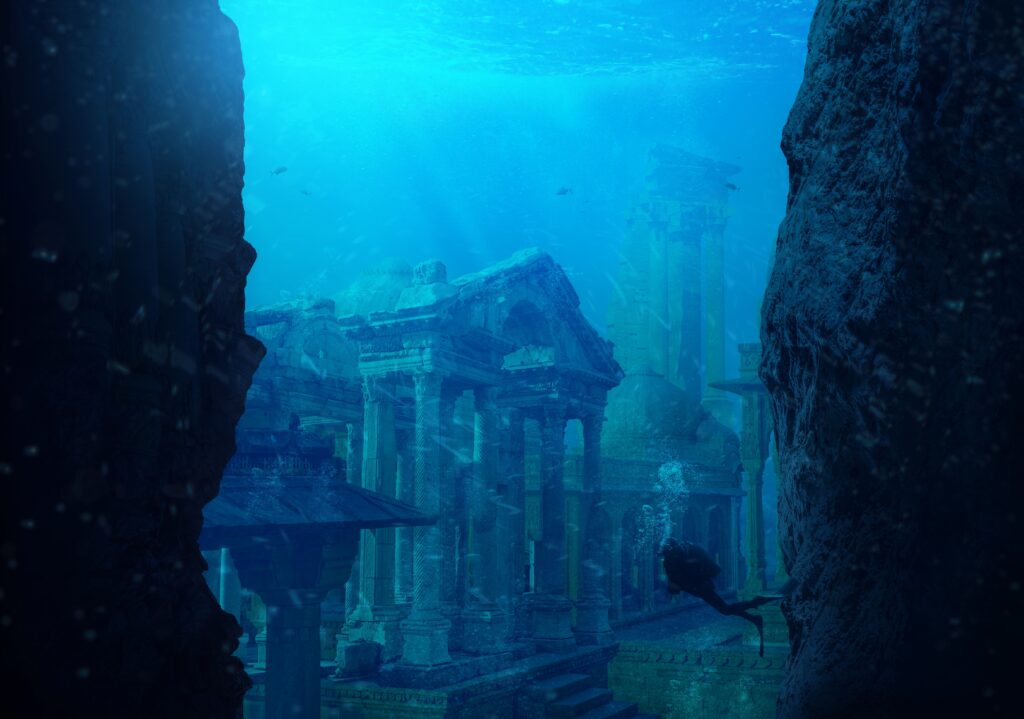
In 2001, Canadian and Cuban researchers using sonar to scan the ocean floor off Cuba’s western coast detected something astonishing: what appeared to be a series of symmetrical stone structures nearly 2,300 feet below the surface. The layout resembled streets, pyramids, and geometrically arranged blocks, spanning several square miles. Some believed it could be a sunken city, possibly linked to Plato’s legendary Atlantis, lost beneath the sea thousands of years ago. The depth at which it was found stunned experts; no known civilization should have existed when sea levels were that low, raising serious questions about its origin.
Paulina Zelitsky, a marine engineer, made the discovery, and her team using advanced side-scan sonar. They planned future dives with submersibles, but murky politics and funding challenges stalled exploration. While skeptics argue it’s a natural geological formation, the precision and size remain deeply intriguing. Without detailed dives and analysis, this supposed underwater metropolis remains speculation, shrouded in mystery.
13. The Red Tide and the Mystery of Neurotoxins
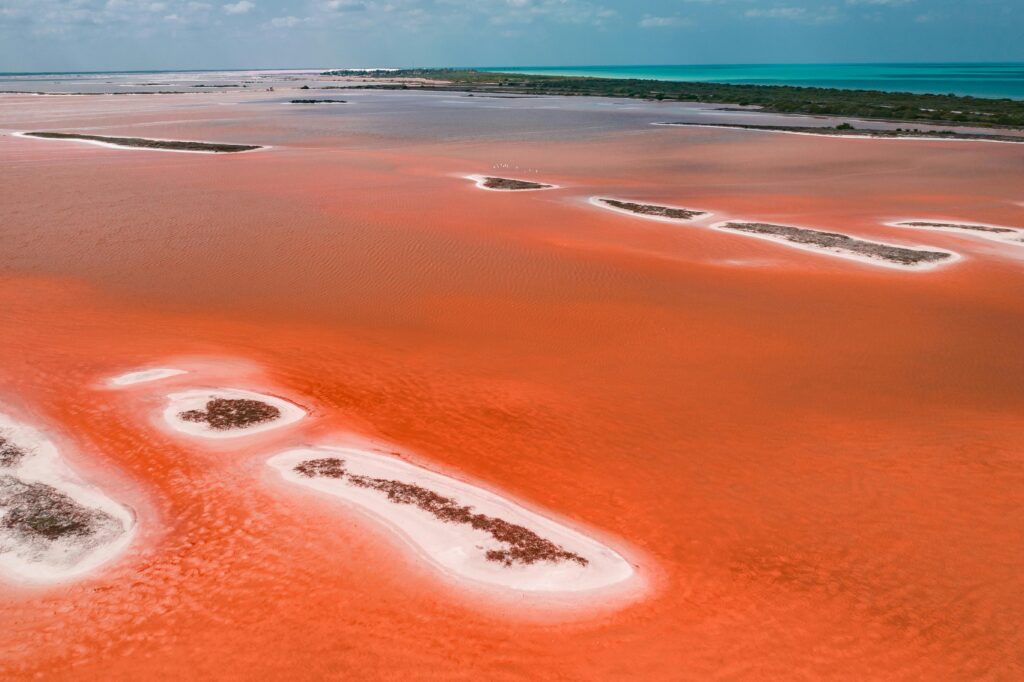
Every year, toxic algal blooms known as “red tides” transform coastal waters into eerie, rust-colored zones of death, killing fish, sickening marine mammals, and triggering respiratory issues in humans. Caused by an explosive growth of microscopic algae, particularly Karenia brevis in the Gulf of Mexico, red tides release potent neurotoxins called brevetoxins. These toxins can become airborne, causing coughing fits and burning eyes in beachgoers. But what still puzzles scientists is what exactly causes red tides to intensify or suddenly appear in new regions, and how climate change, pollution, and shifting currents may be triggering more frequent and extreme blooms.
Even more unsettling is how these neurotoxins affect the brains of animals exposed to them. Studies show that dolphins and sea turtles found near red tides often suffer from disorientation, seizures, and memory loss, symptoms eerily similar to human neurological diseases. Researchers are racing to understand how these marine toxins may impact the food chain and potentially affect humans. Source: National Geographic
14. Kavachi: The Submarine Volcano That Hosts Sharks
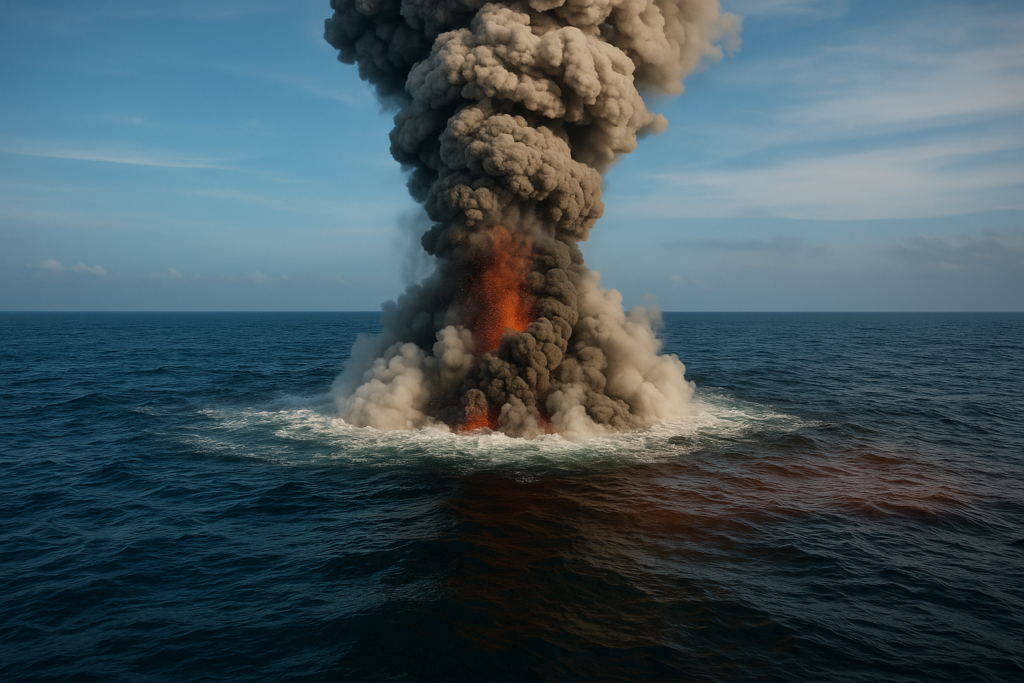
In the Solomon Islands, there’s an underwater volcano so active and strange that it defies basic expectations, and it’s named Kavachi. Nicknamed the “Sharkcano,” this submarine volcano periodically erupts from beneath the sea, releasing plumes of superheated ash, gas, and molten rock. What startled scientists wasn’t just the activity; it was what they found inside the crater. During a 2015 expedition, researchers deployed underwater cameras and discovered hammerhead and silky sharks swimming inside the volcano’s acidic, high-temperature waters, seemingly unaffected by the extreme conditions.
This discovery poses serious questions: How do these large predators tolerate the heat, acidity, and pressure fluctuations of an erupting volcano? Do they live there year-round, or only during dormant phases? And could similar species be hiding in other underwater volcanoes we’ve never explored? Kavachi erupted again in 2022, and although the area remains too hazardous to study up close, what lies inside it may reshape our understanding of resilience and adaptation in ocean life.
15. The Milne Ice Shelf Cracking from Below
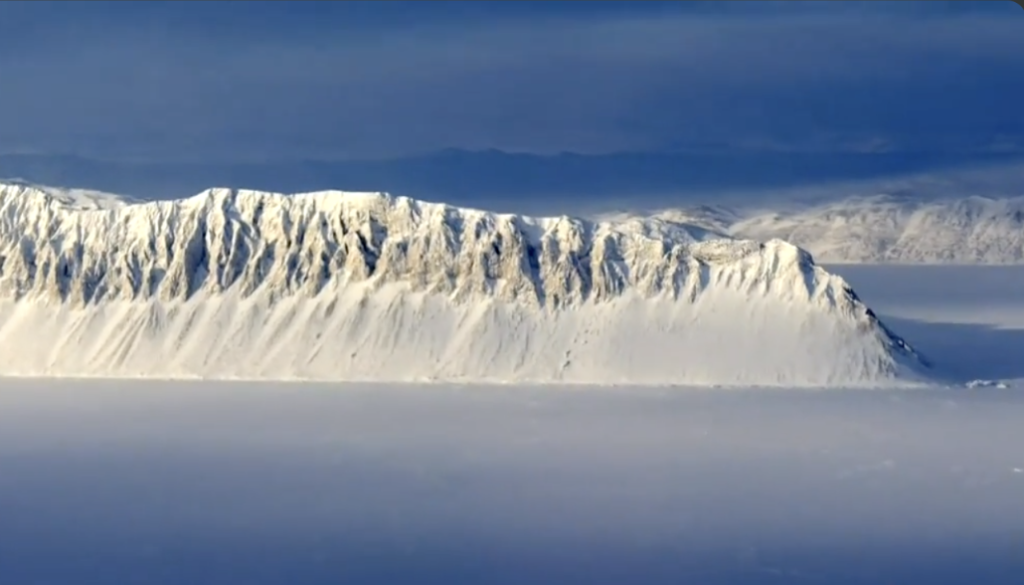
In 2020, satellite imagery and drone footage revealed that Canada’s last fully intact ice shelf, the Milne Ice Shelf, had suddenly fractured and collapsed into the Arctic Ocean. While melting from above due to rising air temperatures was expected, scientists were shocked to find that much of the damage came from below. Warm ocean currents had silently crept underneath the 4,000-year-old ice sheet, thinning it until a massive chunk almost 80 square miles broke off without warning. This under-ice erosion is becoming a global concern, but the exact patterns and forces involved remain deeply misunderstood.
What baffles researchers is the unpredictable nature of these underwater melt events. Oceanic heat doesn’t always follow obvious currents or patterns, and modeling subsurface flow beneath kilometers of ice is incredibly difficult. With Antarctica’s ice shelves also showing signs of thinning from below, scientists are racing to understand how fast, and how far, this invisible melting could go.
Source: NASA Earth Observatory
16. The Dead Zones That Breathe—and Then Don’t
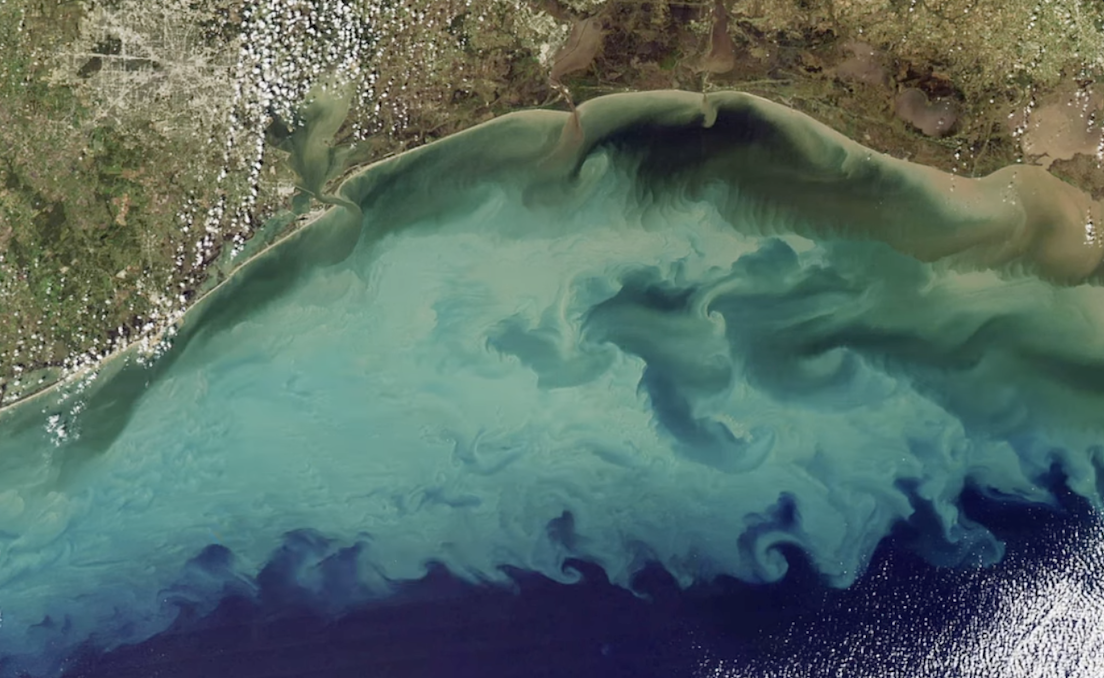
Across the world’s oceans, scientists have identified haunting areas called “dead zones”, vast stretches of water so depleted of oxygen that marine life simply cannot survive. One of the largest forms each year in the Gulf of Mexico, expanding to more than 6,000 square miles, roughly the size of Connecticut. These zones are primarily caused by agricultural runoff rich in nitrogen and phosphorus, which fuels explosive algae blooms. When the algae die, their decomposition consumes oxygen, creating hypoxic conditions that suffocate fish, crabs, and other sea creatures. Entire ecosystems collapse, leaving behind underwater deserts. But the most puzzling phenomenon? Some of these zones re-oxygenate without clear cause, while others expand unpredictably even without new pollution.
Scientists are still trying to understand what drives these fluctuations. Ocean currents, temperature shifts, microbial activity, and stratification all play a role, but the exact mechanics remain murky. As climate change accelerates and rainfall patterns shift, dead zones are expected to increase in frequency and severity. Yet, no model reliably predicts when a dead zone will “breathe” again. The ocean’s chemistry is more volatile than we imagined, and these mysterious pulses of life and death could hint at deeper imbalances still unfolding. Source: Smithsonian Ocean
17. The Devil’s Sea of Japan
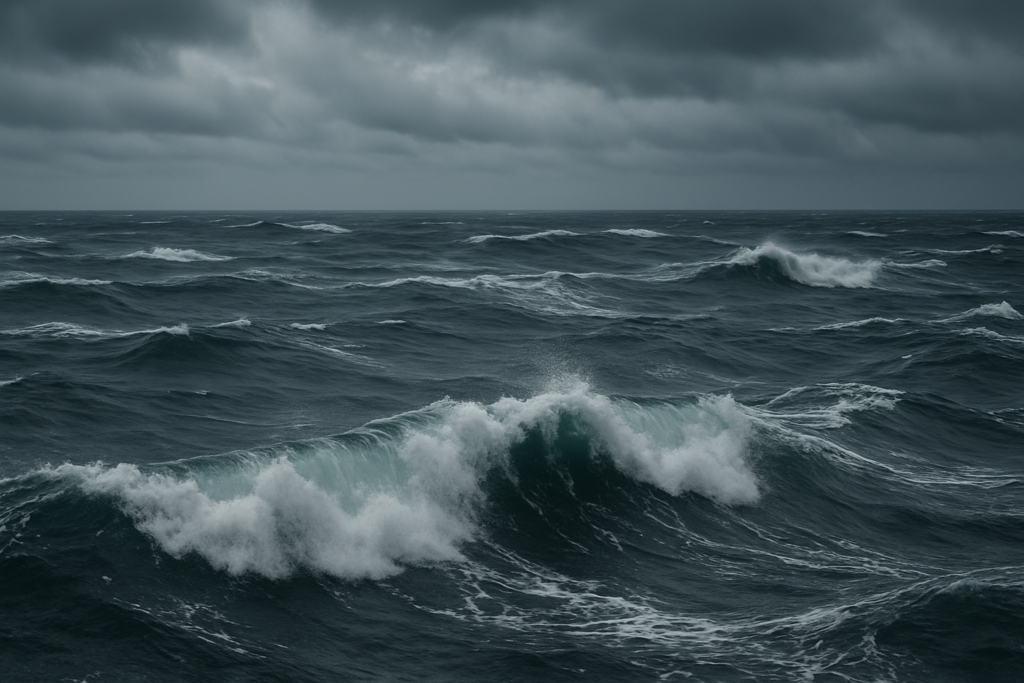
Nicknamed the “Pacific Bermuda Triangle,” the Devil’s Sea, also known as the Dragon’s Triangle, lies off the southeastern coast of Japan, stretching toward the island of Guam. For centuries, it has been infamous for eerie disappearances, including fishing boats, cargo ships, and even entire military vessels. Between 1950 and 1954, five Japanese military ships vanished with over 700 crew members onboard, prompting officials to halt all missions in the region. One of the most chilling losses was a government-sponsored research vessel sent to study the zone, which disappeared without leaving a single trace. Reports from the area include ghost ships, sudden squalls, strange lights, and compass malfunctions, creating a legacy of fear and fascination.
Geologists suggest that intense tectonic activity and underwater volcanoes could explain some of these vanishings. Others point to magnetic anomalies or gas eruptions, like methane hydrates destabilizing vessels from below. Still, the combination of science and superstition has made the Devil’s Sea a persistent maritime mystery that continues to defy clear answers. Source: Marine Insight
18. Lake Vostok: The Hidden Lake Beneath Antarctic Ice

Buried under more than 2.5 miles of solid ice, Lake Vostok is one of the world’s largest subglacial lakes, and for millions of years, it’s been completely sealed off from the surface. Hidden beneath Antarctica’s East Ice Sheet, this vast, dark body of freshwater spans roughly 160 miles in length and 30 miles in width, rivaling Lake Ontario in size. Scientists believe it hasn’t seen sunlight in over 15 million years, making it a time capsule for prehistoric Earth, or perhaps something even more alien.
In 2012, after decades of drilling through ice using a specially pressurized borehole, Russian researchers reached the lake’s surface and pulled up samples. They discovered microbial life, organisms that appeared to be adapted to complete darkness, high pressure, and a near-freezing, oxygen-deprived environment. But the full biodiversity of Lake Vostok remains unknown. Scientists suspect the lake could host never-before-seen life forms, and it may even model what oceans on icy moons like Europa could look like.
19. The Ghost Fleet of Chuuk Lagoon
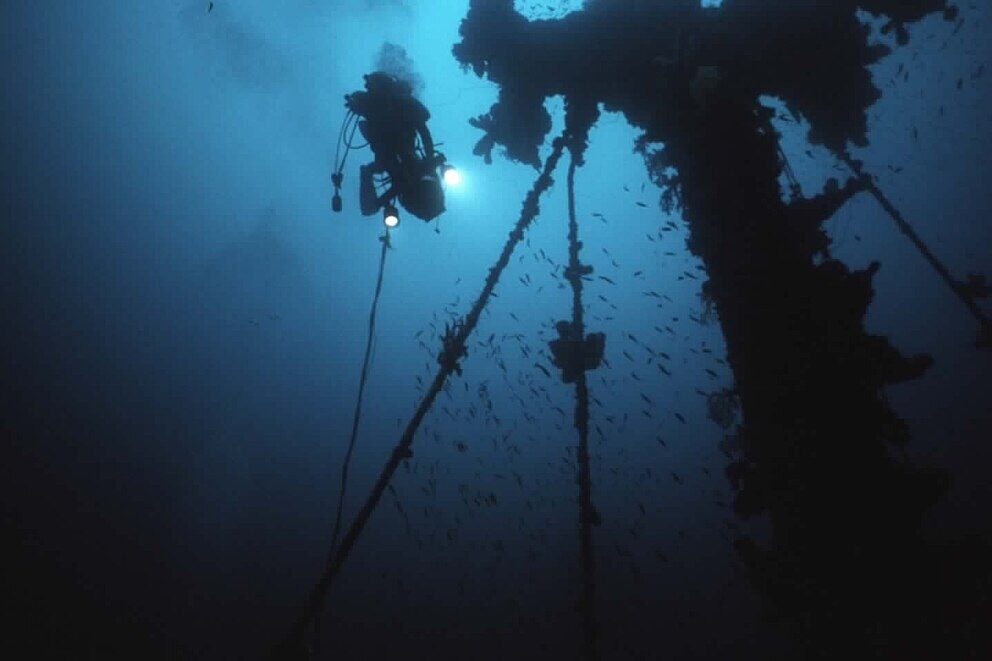
Beneath the turquoise waters of Chuuk Lagoon in Micronesia lies one of the most haunting underwater graveyards on Earth, a sunken armada of Japanese warships, planes, tanks, and supply vessels from World War II. In 1944, during Operation Hailstone, U.S. forces launched a surprise two-day attack on what was then Japan’s key naval stronghold in the Pacific. More than 60 ships and 275 aircraft were sunk in the lagoon, transforming it into a submerged battlefield frozen in time. Today, the site is known as the Ghost Fleet of Chuuk Lagoon, and the wrecks remain eerily intact, some still containing human remains, personal artifacts, and fully loaded cargo holds.
Despite being a diver’s paradise, the area is considered sacred and shrouded in solemnity. Coral now grows over rusting guns and control rooms, and deep inside some ships, gas masks, uniforms, and bottles of sake still sit undisturbed. But what fascinates scientists is how nature has slowly claimed this underwater tomb. Entire micro-ecosystems have formed on the wrecks, yet questions remain about how long these structures will last, and whether leaking oil and munitions might one day spark an ecological disaster. Source: National Geographic
20. The Mariana Trench

Plunging nearly 36,000 feet into the western Pacific Ocean, the Mariana Trench is the deepest known part of Earth’s seabed, so deep that if Mount Everest were dropped into it, its peak would still be submerged by over a mile of water. The trench’s darkest point, called Challenger Deep, remains one of the most unexplored regions on the planet. First sounded in 1951 and visited by only a handful of missions, including James Cameron’s solo dive in 2012, this crushingly deep trench continues to yield creatures and conditions unlike anything found elsewhere on Earth.
What baffles scientists is how life can even exist under such extreme conditions, including total darkness, near-freezing temperatures, and immense pressure. Organisms like amphipods, snailfish, and xenophyophores thrive there, and many have evolved gelatinous, transparent bodies with no air cavities. Some samples collected contained genes that help them resist DNA damage caused by high pressure. However, the trench may hold more than life; recent dives have uncovered plastic waste at the bottom, raising disturbing questions about how far human pollution has already spread. Source: Smithsonian Institute
21. Neptune Memorial Reef
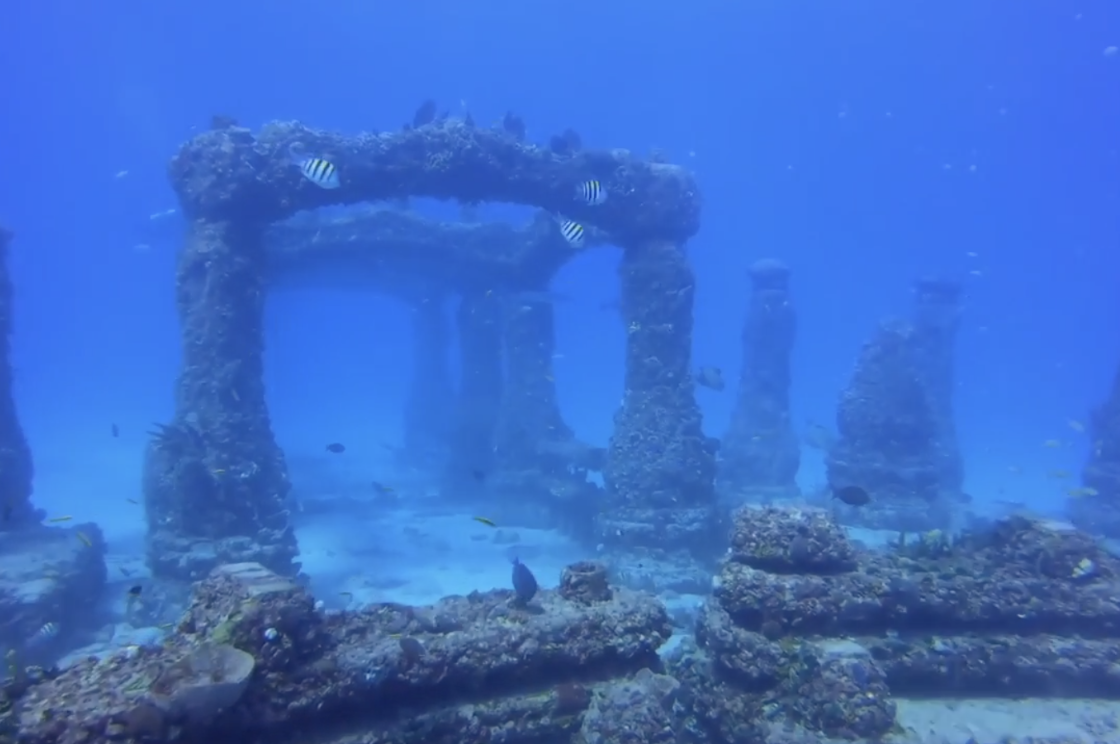
Just off the coast of Miami, Florida, lies an underwater city that’s as haunting as it is beautiful, Neptune Memorial Reef. Designed to resemble the lost city of Atlantis, this artificial reef covers over 16 acres of the ocean floor. It serves a dual purpose: an artificial reef for marine life and a final resting place for human remains. Instead of traditional headstones, cremated ashes are mixed into concrete and formed into coral-safe sculptures, benches, columns, and gates. Divers can explore the eerily serene landscape of lion statues, stone roads, and memorial plaques nestled among coral and schools of fish.
Scientists originally hoped it would attract marine biodiversity, and it has. The reef has become home to numerous species, including angelfish, sea urchins, and rays, while also mitigating the environmental impact of traditional burials. But what captivates visitors and researchers alike is the emotional resonance of the place: a functioning ecosystem built from human loss, memory, and the ocean’s enduring mystery. Source: Smithsonian Ocean
22. The SS Thistlegorm Wreck
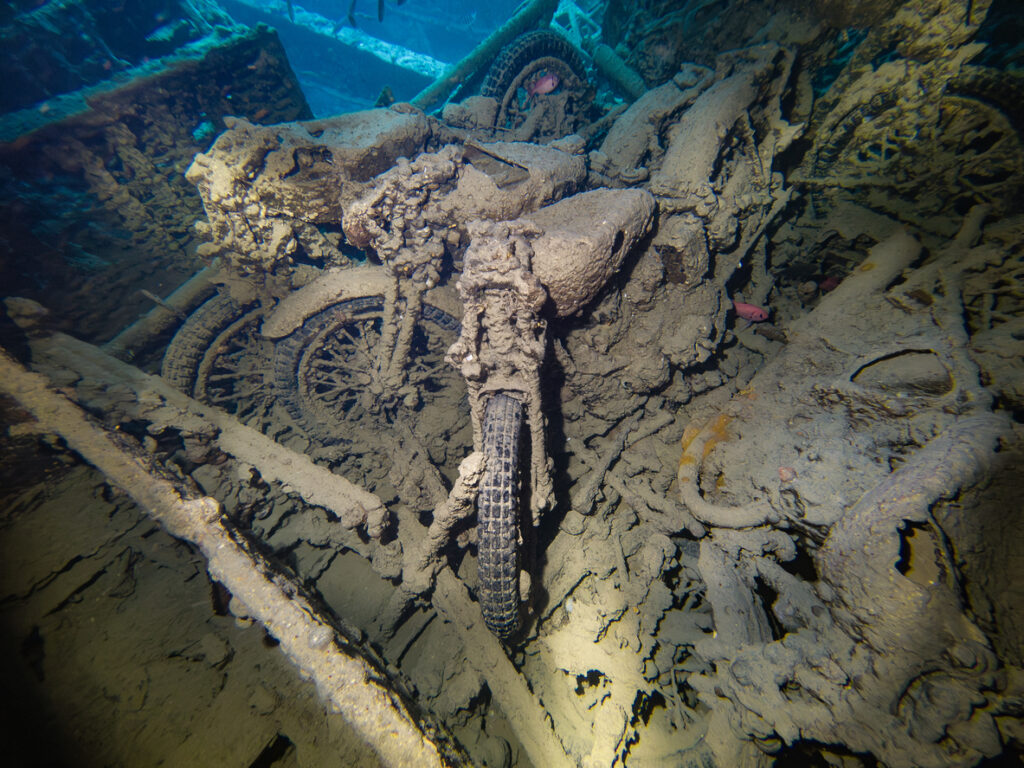
Resting on the seafloor of the Red Sea lies one of the most visually astonishing shipwrecks in the world, the SS Thistlegorm, a British armed cargo ship sunk in 1941 by German bombers during World War II. It now sits eerily preserved in about 100 feet of water, with much of its cargo still perfectly intact. Divers exploring the wreck encounter motorcycles lined up in the hold, stacks of rifles, airplane parts, trucks, rubber boots, and even an old locomotive flung off the deck during the explosion. It’s a time capsule frozen in the chaos of war, and scientists still marvel at how intact everything remains.
What makes the Thistlegorm such a compelling mystery is not how it sank, but the way marine life and human history have merged in its remains. Coral now coats the motorcycles, and lionfish drift between railway carriages. Despite countless dives, new compartments and artifacts are still being discovered, fueling debates over how long the wreck can last before the ocean finally consumes it.
23. Antarctica’s Icefish with Antifreeze Blood

In the frigid waters of the Southern Ocean, swimming among icebergs and below freezing-point seas, lives a family of bizarre creatures known as icefish. These Antarctic natives have evolved a biological trait that defies logic: antifreeze proteins in their blood that prevent ice crystals from forming inside their bodies. Even stranger, their blood is almost completely clear; they’re the only known vertebrates that lack hemoglobin, the protein that gives blood its red color and carries oxygen. Despite this, they manage to survive in waters that plunge to 28.8°F, where most fish would instantly freeze or suffocate.
Scientists still aren’t entirely sure how these fish oxygenate their bodies efficiently without red blood cells. Some species have enlarged hearts and wide capillaries, while others rely on oxygen diffusing directly through their skin. This adaptation raises more profound questions about life at extreme limits. Could similar antifreeze proteins exist in other cold-world organisms, or even help preserve human organs for transplant in the future? Source: National Science Foundation
24. The Underwater Waterfalls of Mauritius
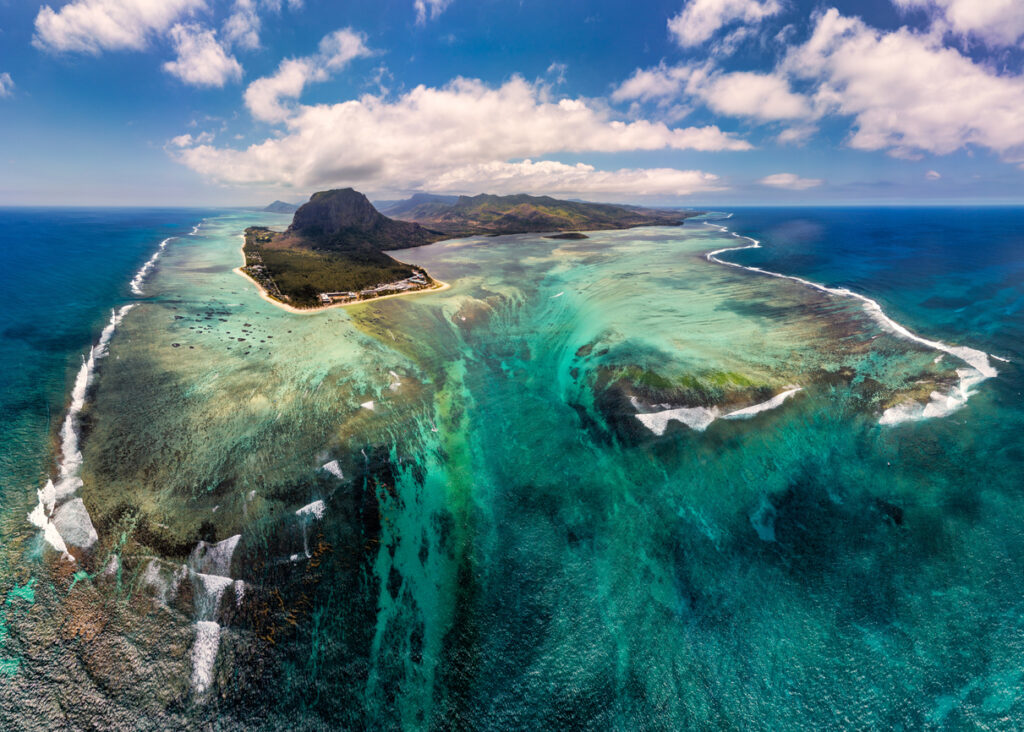
Off the southwest coast of Mauritius, an island in the Indian Ocean, lies one of the ocean’s most breathtaking optical illusions: what looks like a massive underwater waterfall plunging into a deep abyss. From above, the illusion is so realistic that early pilots and explorers believed the ocean floor was collapsing into itself. In reality, this visual marvel is created by shifting sand and silt on the seafloor, swept off the island’s coastal shelf by ocean currents and cascading over a drop-off in the seabed. It’s a gravity-defying trick of light, depth, and color that still confounds first-time viewers.
What’s remarkable is how little we still know about how long this phenomenon has been occurring, or how it might change as currents shift due to climate change. The illusion’s visibility depends on sunlight, tide, and sand density, making it a fleeting and dynamic seascape. Even satellite imagery struggles to capture its full complexity, and researchers continue to study how sediment movement and reef structures combine to produce one of the most mesmerizing sights in the sea.
25. The Black Smokers: Towers of Fire in the Abyss
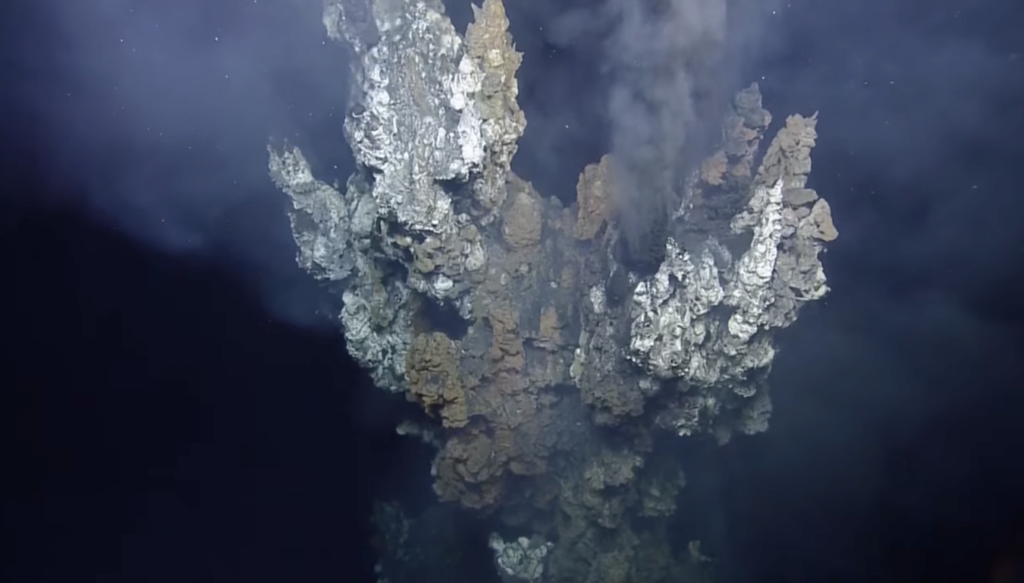
At the bottom of the ocean, where sunlight never reaches and pressure could crush a submarine, enormous towers spew clouds of black water into the dark. These are black smokers, hydrothermal vents discovered in the late 1970s, and they still baffle scientists today. Formed at tectonic plate boundaries, they pump superheated, mineral-rich water up to 750°F, creating “smoke” that’s iron sulfide particles crystallizing in the icy seawater. Some of these chimneys grow over 30 feet tall, forming underwater skylines that look like something from an alien world.
What’s even more astonishing is what lives around them. Despite the lack of sunlight, entire ecosystems thrive through chemosynthesis, a process where bacteria convert vent chemicals into energy. Tube worms with no mouths or stomachs, blind shrimp, and heat-resistant microbes live here, defying every rule we thought defined life. Scientists still don’t fully understand how these creatures evolved or whether black smokers could hint at life on other planets.
26. The Ocean’s Missing Plastic
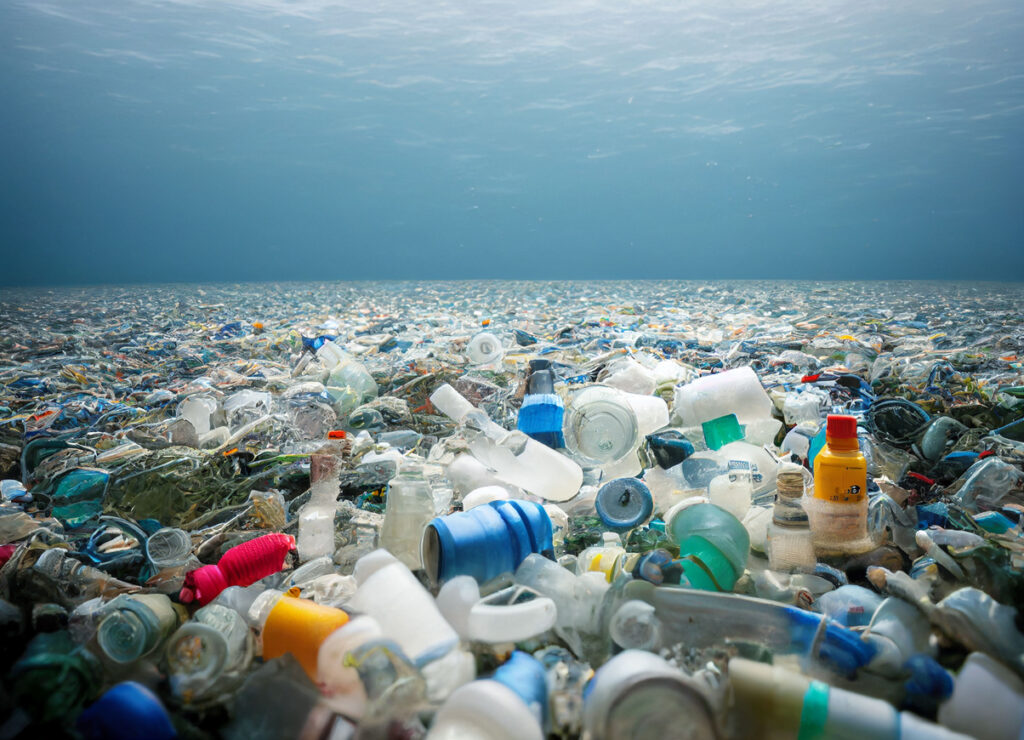
Each year, scientists estimate that between 18 and 31 billion pounds of plastic waste flows into the world’s oceans. But when researchers attempt to measure what’s actually floating in the water, they can only find about 1% of that total, a fraction of what should be present. Even in areas like the Great Pacific Garbage Patch, the amount of debris observed doesn’t come close to matching predictions. While some plastic washes ashore or sinks to the ocean floor, the vast majority disappears, and no one is entirely sure where it goes.
Some theories suggest that it’s breaking down into particles so tiny that they escape detection or get bundled into marine snow, small flakes of organic matter that drift to the deep sea. Others believe fish and filter feeders are unknowingly consuming it, introducing microplastics into the food chain. But the most unsettling part? Until we discover the whereabouts of the missing 99%, we can’t accurately measure the actual environmental damage. Source: Science
Still Think We’ve Explored the Ocean?
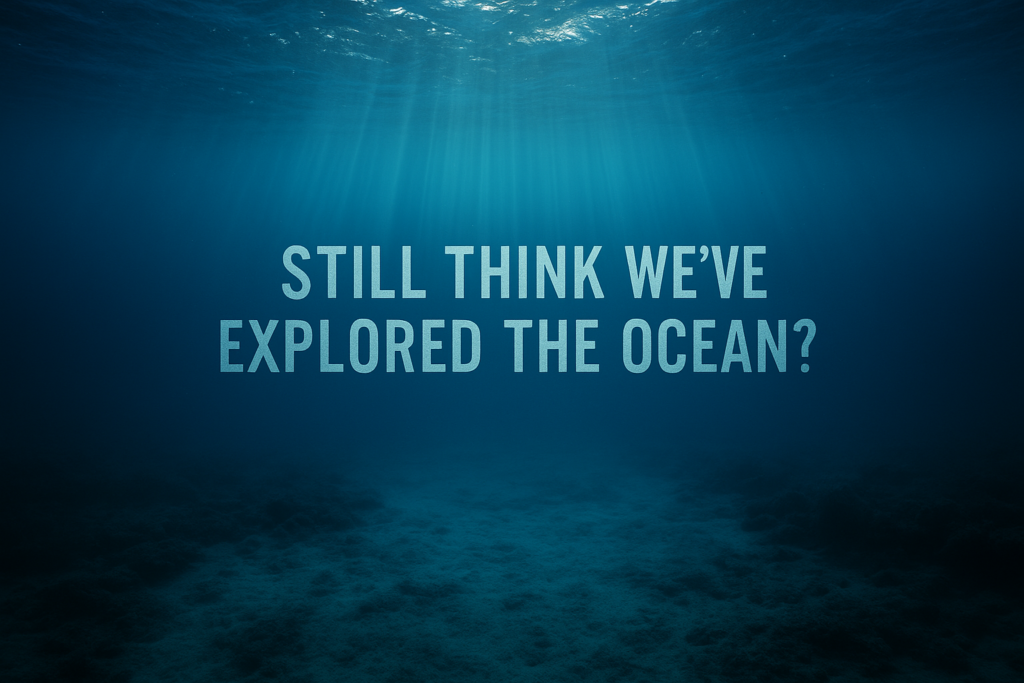
We’ve mapped the surface of Mars in more detail than our seafloor. From ancient cities that may or may not exist, to glowing sharks and volcanoes full of predators, the ocean is still rewriting what we thought we knew about life on Earth. And that’s just the part we’ve found. With each new dive and discovery, the deep keeps offering more riddles than answers.
Heard of an ocean mystery we missed? Drop it in the comments and let’s get curious together. The sea still has secrets, and we’re just getting started.
This story, 26 Ocean Mysteries That Still Baffle Scientists was first written on DailyFetch.net


